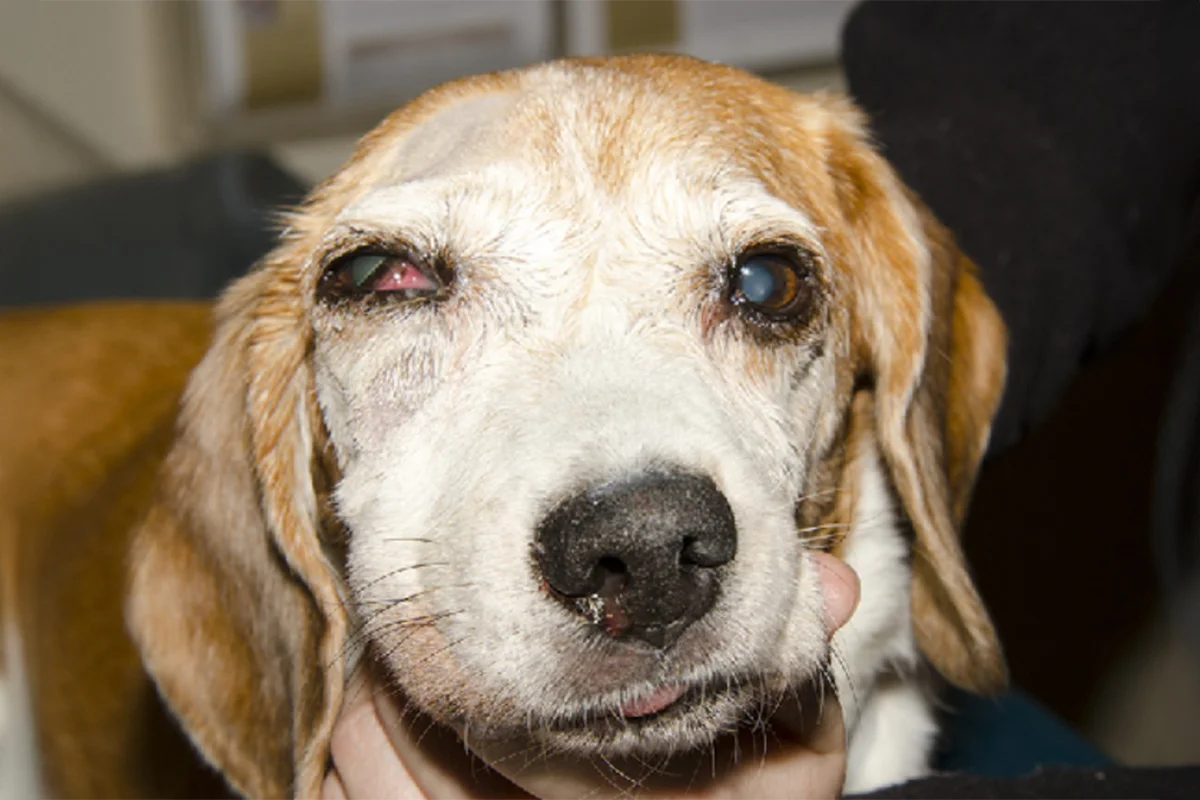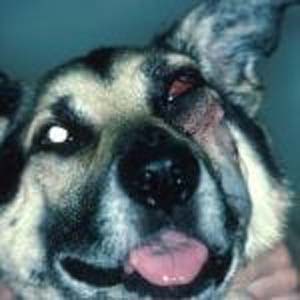Pet Retrobulbar Masses in Spring, TX
Bring your pet comprehensive care for retrobulbar masses and orbital disease at North Houston Veterinary Ophthalmology in Spring, TX. Early diagnosis and treatment are available.

Retrobulbar Masses
Understanding Pet Retrobulbar Masses
A retrobulbar mass is a lesion within the orbit (eye socket), usually behind the eye. These masses can significantly impact a pet’s health, necessitating prompt veterinary attention. Our team at North Houston Veterinary Ophthalmology is highly skilled in diagnosing and treating retrobulbar masses to ensure your pet can continue to enjoy a high quality of life with healthy eyesight.

Clinical Signs of Retrobulbar Masses
Retrobulbar masses manifest through various clinical signs, which are essential for early detection and treatment. Common symptoms include extrusion of the globe (exophthalmia), dislocation of the globe, redness, and protrusion of the third eyelid. Some pets may experience significant pain, leading to avoidance of touch, difficulty opening the jaws, lethargy, vocalization, and reduced appetite. Additionally, periorbital swelling and discharge might be present, with blindness in the affected eye being a potential but not universal outcome.
Causes and Diagnosis
Understanding the causes of retrobulbar masses is crucial for effective treatment. The most frequent causes include abscess or cellulitis, sialocele (cystic structure of the salivary gland), and cancer. Abscesses or cellulitis typically develop rapidly, are very painful, and often occur in young, large-breed dogs. These conditions can result from trauma, hematogenous emboli, or tooth root abscesses. Sialoceles develop slowly, and are not typically painful. Retrobulbar cancer tends to develop slowly and may or may not cause pain. This type of cancer in dogs is generally benign and originates within the orbit. In cats, it is typically malignant, arising from non-orbital tissues that invade the orbit.
Accurate diagnosis is vital for effective treatment. Imaging techniques confirm the presence and extent of the mass. Ocular ultrasound can identify some masses and assist in collecting samples for analysis. Advanced imaging methods, such as CT scans or MRIs, provide more precise information about the presence and location of a retrobulbar mass. These methods can determine whether the mass is confined to the orbit, related to a tooth root abscess, an extension of non-orbital cancer, or has spread to surrounding tissues, including the brain.
Treatment Options
Treatment for retrobulbar masses varies depending on the type, extent, origin of the mass, and the health of the globe. Retrobulbar abscesses or cellulitis are usually treated by creating a drainage tract from the mouth to the orbit under anesthesia, combined with aggressive systemic antibiotics and anti-inflammatory medications. For retrobulbar sialoceles, periodic drainage, injection with a sclerotic agent to promote scarring, or surgical removal may be necessary. In cases involving cancer, surgical removal of the mass might be required. This can involve an orbitotomy to save the eye or an exenteration to remove all tissues within the orbit, including the eye. Post-surgical treatment may involve chemotherapy or radiation therapy if needed. In cases where cancer is too extensive for surgery, chemotherapy or radiation may be the only viable treatment options.
Seeking Veterinary Care
Prompt veterinary care is essential if you notice any signs of a retrobulbar mass in your pet. Early intervention can significantly improve outcomes and prevent further complications. If your pet exhibits symptoms such as eye protrusion, redness, pain, or swelling around the eyes, it is crucial to seek professional veterinary care immediately.
Contact Us
North Houston Veterinary Ophthalmology specializes in diagnosing and treating retrobulbar masses in pets as part of our wide range of expertise in veterinary eye care. Our experienced team utilizes advanced diagnostic and treatment methods to ensure the best possible care for your pet. If you suspect your pet may have a retrobulbar mass, contact us immediately to schedule a consultation. Early detection and treatment are vital to maintaining your pet’s health and quality of life.